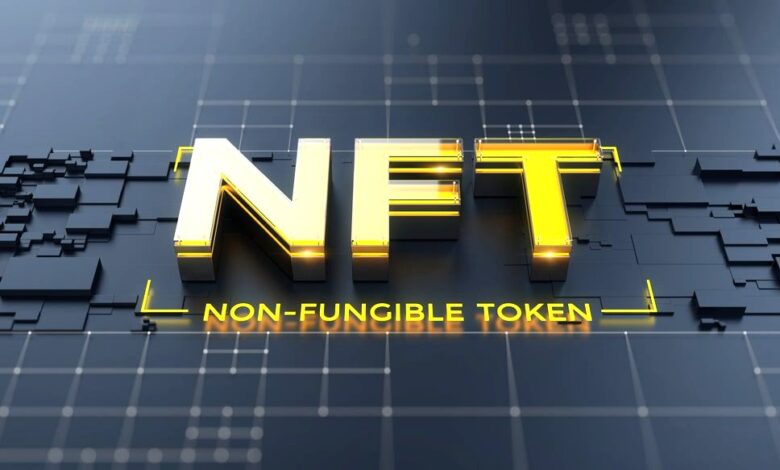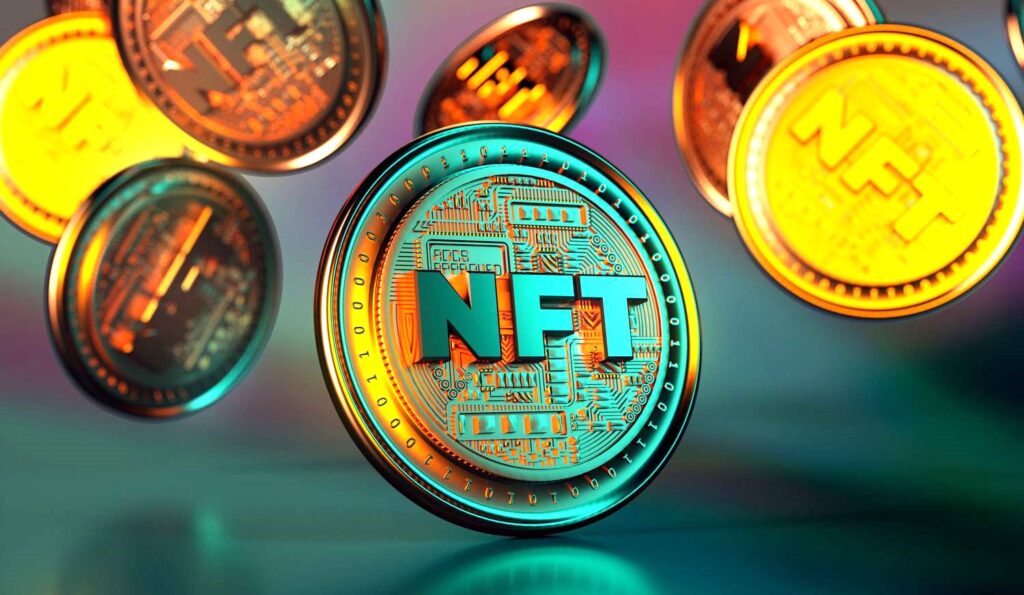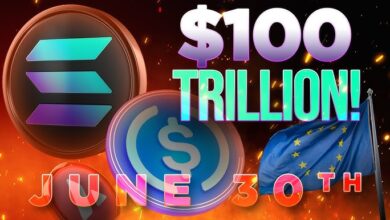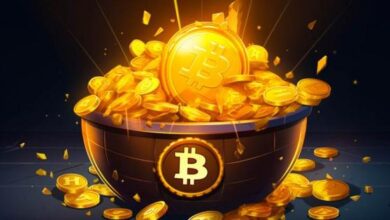The Growing Popularity of Non-Fungible Tokens (NFTs)
Investing in Non-Fungible Tokens (NFTs): Risks and Rewards

Non-Fungible Tokens (NFTs): In recent years, a revolutionary digital trend has taken the art, entertainment, and technology worlds by storm: Non-Fungible Tokens (NFTs). These unique digital assets have grown exponentially in popularity, with individuals and businesses alike eager to capitalize on this emerging market. This article explores the phenomenon of NFTs, discussing what they are, the different types, how to buy and sell them, common scams, and the exciting future of NFTs.

What are Non-Fungible Tokens (NFTs) and Why Are They So Popular?
Non-fungible tokens, or NFTs, are a type of digital asset that represent ownership or proof of authenticity of a unique item, typically on a blockchain. The term “non-fungible” is derived from the fact that these tokens are not interchangeable on a one-to-one basis, unlike cryptocurrencies such as Bitcoin or Ethereum, which are fungible and can be exchanged on a like-for-like basis.
The popularity of NFTs can be attributed to several key factors:
Digital Ownership:
NFTs allow individuals to own and prove ownership of digital content, which was previously difficult to establish in the digital world. This concept has attracted creators, artists, musicians, and even game developers.
Scarcity and Rarity:
NFTs introduce scarcity to the digital realm. Each NFT is unique, making it desirable for collectors who value exclusivity and rarity.
Authenticity and Provenance:
NFTs provide a secure and verifiable way to prove the authenticity and provenance of digital assets, reducing the risk of counterfeit or stolen artwork.
Blockchain Technology:
NFTs are built on blockchain technology, offering transparency and security. Ownership and transaction history are recorded on a decentralized ledger, eliminating the need for intermediaries.
Different Types of NFTs
NFTs come in various forms, catering to different interests and industries:
Art NFTs:
Artworks, illustrations, and digital creations are among the most popular NFT categories. Renowned artists have sold their digital art pieces as NFTs for millions of dollars.
Collectibles:
Digital collectibles, such as trading cards or virtual pets, have become highly sought-after NFTs. These collectibles often have unique traits and can be traded or used within virtual worlds.
Music and Entertainment:
Musicians, actors, and content creators have embraced NFTs to sell exclusive content, concert tickets, or virtual meet-and-greet experiences.
Gaming:
NFTs are integrated into video games, allowing players to own and trade in-game assets like skins, weapons, or characters.
Virtual Real Estate:
Virtual worlds like Decentraland and The Sandbox offer NFT-based virtual land ownership, enabling users to build and monetize their virtual properties.
How to Buy and Sell NFTs
Buying and selling NFTs involves several steps:
Create a Wallet:
To start, you need a digital wallet that supports NFTs, such as MetaMask or Trust Wallet. These wallets store your NFTs and facilitate transactions.
Fund Your Wallet:
Purchase cryptocurrency (usually Ethereum) and transfer it to your wallet to cover the cost of NFT purchases and transaction fees.
Choose a Marketplace:
NFTs are bought and sold on online marketplaces like OpenSea, Rarible, or NBA Top Shot. Browse these platforms to find NFTs that interest you.
Make a Purchase:
When you find an NFT you want, place a bid or click “Buy Now.” Confirm the transaction and pay with your wallet.
Ownership and Transfer:
Once you own an NFT, you can transfer it to another wallet, sell it, or keep it in your collection. Ownership records are maintained on the blockchain.

Common NFT Scams and How to Avoid Them
As with any burgeoning market, NFTs have attracted scammers looking to take advantage of unsuspecting buyers. Here are some common NFT scams and tips to avoid them:
Fake Listings:
Beware of fake NFT listings that promise rare items at too-good-to-be-true prices. Always verify the authenticity of the seller and do your research.
Phishing:
Avoid clicking on suspicious links or sharing your private keys. Only use trusted websites and wallets to transact in NFTs.
Stolen Artwork:
Ensure that the NFT you’re purchasing has legitimate provenance. Research the artist and verify the history of the digital asset.
Pump-and-Dump Schemes:
Be cautious of influencers promoting NFTs excessively. Prices may be artificially inflated to lure investors before crashing.
Gas Fee Scams:
Pay attention to gas fees (transaction costs) when buying NFTs. Scammers may inflate fees to steal your cryptocurrency.
The Future of NFTs
The future of NFTs appears bright, with several developments on the horizon:
Integration into Traditional Markets:
NFTs could become integrated into traditional markets, offering new ways to trade assets like real estate or stocks.
Tokenization of Physical Assets:
NFTs may be used to represent ownership of physical assets, such as real estate or luxury items, making it easier to buy, sell, and share these assets digitally.
Improved Sustainability:
Concerns about the environmental impact of blockchain technology have prompted efforts to make NFTs more eco-friendly through alternative consensus mechanisms.
Evolving Use Cases:
As technology advances, NFTs may find new applications in industries like education, healthcare, and supply chain management.
Conclusion
Non-fungible tokens (NFTs) have transformed the way we think about ownership, authenticity, and digital assets. Their meteoric rise in popularity can be attributed to their ability to provide digital ownership, scarcity, and transparency in a rapidly evolving digital landscape. As the NFT ecosystem continues to expand and mature, it holds the potential to revolutionize various industries and redefine the concept of ownership in the digital age. However, as with any emerging technology, it’s crucial for individuals to exercise caution, conduct thorough research, and remain vigilant against potential scams in this exciting but still evolving space.
FAQs:
Q: What are Non-Fungible Tokens (NFTs)?
A: Non-fungible tokens, or NFTs, are unique digital assets that represent ownership or proof of authenticity of a specific item or piece of content, typically on a blockchain. Unlike cryptocurrencies such as Bitcoin, NFTs are not interchangeable on a one-to-one basis and each one is distinct.
Q: How do NFTs work?
A: NFTs are built on blockchain technology, which is a decentralized ledger. When someone creates an NFT, it is recorded on the blockchain, establishing ownership and providing a secure and verifiable way to prove the authenticity of a digital asset.
Q: What can be turned into an NFT?
A: Virtually any digital or digitizable item can be turned into an NFT. Common examples include digital art, music, videos, virtual collectibles, in-game items, and even tweets. The key is that it should be unique or have value to collectors.
Q: How do I buy NFTs?
A: To buy NFTs, you’ll need a digital wallet that supports NFTs and some cryptocurrency, usually Ethereum, to cover the cost of purchases and transaction fees. You can then browse NFT marketplaces, like OpenSea or Rarible, find an NFT you want, and complete the purchase using your wallet.
Q: Are NFTs secure?
A: NFTs themselves are secured by blockchain technology, which is considered highly secure. However, it’s essential to be cautious of scams, fake listings, and phishing attempts on NFT marketplaces. Always verify the authenticity of the NFT and the credibility of the seller.
Q: Can I sell NFTs after buying them?
A: Yes, you can sell NFTs on NFT marketplaces. You can list them for sale at a price you choose, or you can auction them. Once a buyer accepts your offer, the ownership is transferred to them upon payment.
Q: What are the risks associated with NFTs?
A: Risks include price volatility, scams, and the potential for copyright disputes. NFT prices can be highly speculative, so it’s crucial to research and make informed decisions. Be cautious of scams and always verify the authenticity of NFTs to avoid purchasing stolen or counterfeit items.
Q: Are NFTs environmentally friendly?
A: NFTs, like most blockchain transactions, can consume significant energy, particularly when using proof-of-work blockchains like Ethereum. However, there are ongoing efforts to make NFTs more sustainable by exploring alternative consensus mechanisms and eco-friendly blockchains.
Q: Are NFTs a bubble or a long-term investment?
A: The NFT market has experienced rapid growth, but it’s still relatively new and speculative. Some NFTs have sold for substantial amounts, while others have lost value. Like any investment, it carries risk, and it’s essential to assess your goals and risk tolerance.
Q: What’s the future of NFTs?
A: The future of NFTs is promising, with potential applications in various industries, including art, gaming, real estate, and more. They may also become integrated into traditional financial markets, offering new opportunities for asset ownership and trading.



